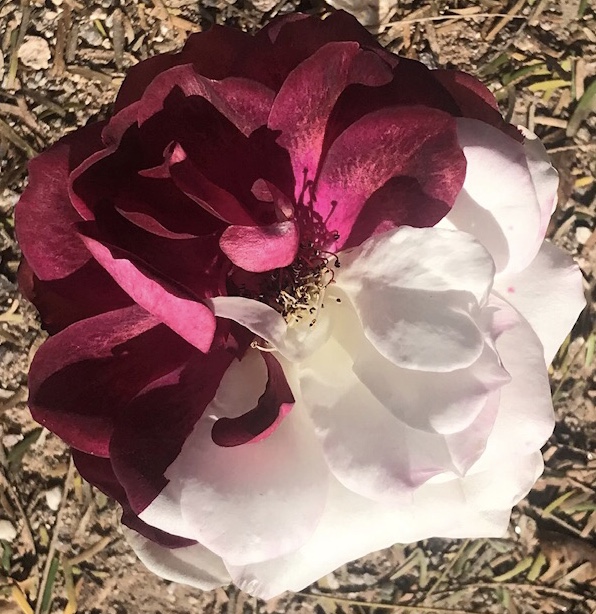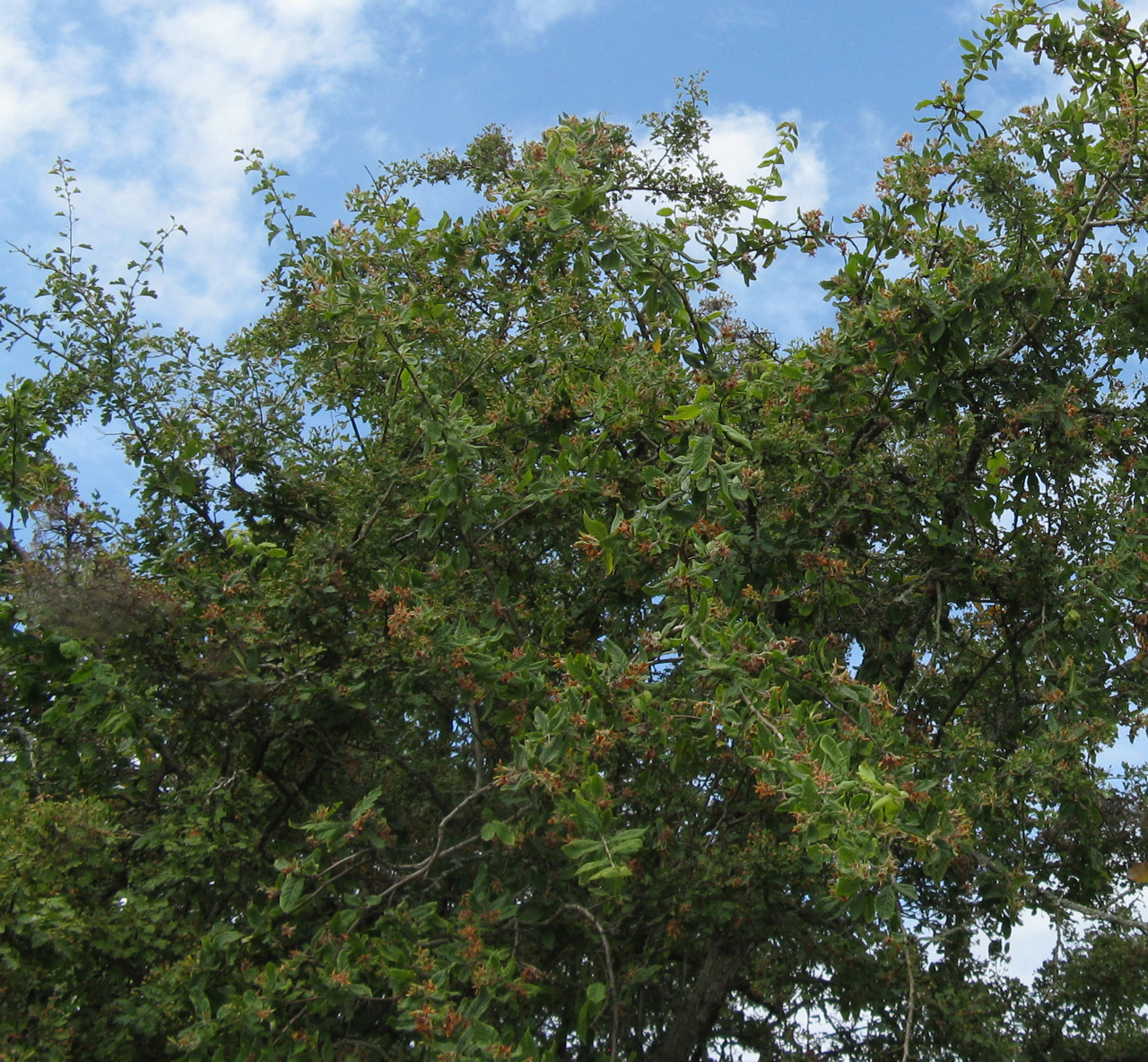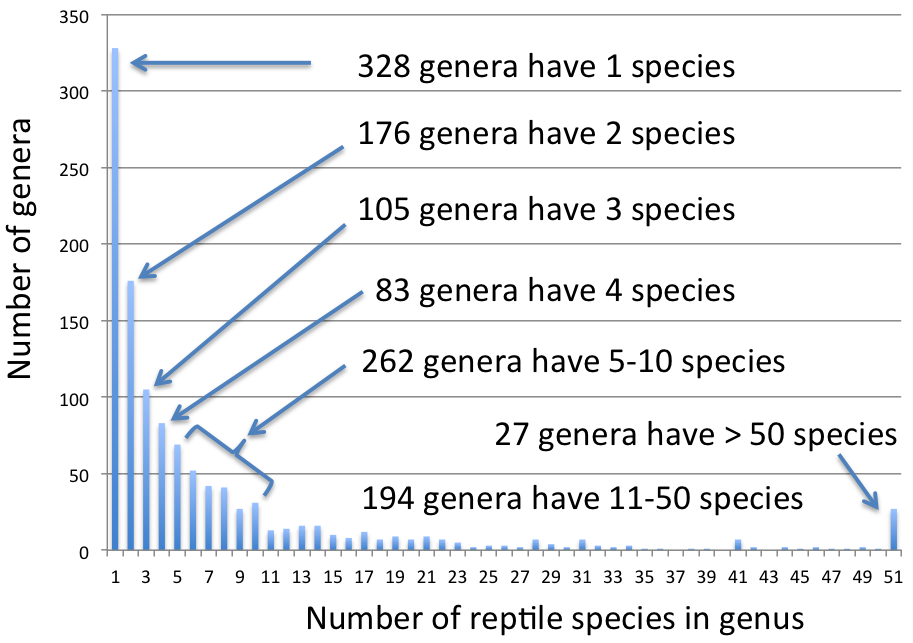|
Graft-chimera
In horticulture, a graft-chimaera may arise in grafting at the point of contact between rootstock and scion and will have properties intermediate between those of its "parents". A graft-chimaera is not a true hybrid but a mixture of cells, each with the genotype of one of its "parents": it is a chimaera. Hence, the once widely used term "graft-hybrid" is not descriptive; it is now frowned upon. Propagation is by cloning only. In practice graft-chimaeras are not noted for their stability and may easily revert to one of the "parents". Nomenclature Article 21 of the ''ICNCP'' stipulates that a graft-chimaera can be indicated either by * a formula: the names of both "parents", in alphabetical order, joined by the plus sign "+": : ''Crataegus'' + ''Mespilus'' * a name: ** if the "parents" belong to different genera a name may be formed by joining part of one generic name to the whole of the other generic name. This name must not be identical to a generic name published under t ... [...More Info...] [...Related Items...] OR: [Wikipedia] [Google] [Baidu] |
Cultivar
A cultivar is a type of cultivated plant that people have selected for desired traits and when propagated retain those traits. Methods used to propagate cultivars include: division, root and stem cuttings, offsets, grafting, tissue culture, or carefully controlled seed production. Most cultivars arise from purposeful human manipulation, but some originate from wild plants that have distinctive characteristics. Cultivar names are chosen according to rules of the International Code of Nomenclature for Cultivated Plants (ICNCP), and not all cultivated plants qualify as cultivars. Horticulturists generally believe the word ''cultivar''''Cultivar'' () has two meanings, as explained in ''Formal definition'': it is a classification category and a taxonomic unit within the category. When referring to a taxon, the word does not apply to an individual plant but to all plants that share the unique characteristics that define the cultivar. was coined as a term meaning "cultivated variety ... [...More Info...] [...Related Items...] OR: [Wikipedia] [Google] [Baidu] |
+Laburnocytisus Wideangle
+'' Laburnocytisus'' 'Adamii' (also known as Adam's laburnum or broom laburnum) is a horticultural curiosity; a small tree which is a graft-chimaera between two species, a laburnum, '' Laburnum anagyroides'', and a broom, '' Chamaecytisus purpureus'' ( syn. ''Cytisus purpureus''), which bears some shoots typical of the one species, some of the other, and some which are a peculiar mixture of both "parents". The plus sign (+) indicates the generic name is made for a graft-chimaera. The plant can also be described by the formula ''Laburnum anagyroides'' + ''Chamaecytisus purpureus''. + ''Laburnocytisus'' 'Adamii' is a legume, a member of the pea family Faboideae (or Papilionaceae, formerly Leguminosae). Only one cultivar, 'Adamii' is known to have arisen from this graft. It is sometimes described as if it were one species, (+ )''Laburnocytisus adamii''; however, it is not one species and this notation is not conforming to International Code of Nomenclatur ... [...More Info...] [...Related Items...] OR: [Wikipedia] [Google] [Baidu] |
Chimera (plant)
A genetic chimerism or chimera ( ) is a single organism composed of cells with more than one distinct genotype. In animals, this means an individual derived from two or more zygotes, which can include possessing blood cells of different blood types, subtle variations in form (phenotype) and, if the zygotes were of differing sexes, then even the possession of both female and male sex organs. Animal chimeras are produced by the merger of two (or more) embryos. In plant chimeras, however, the distinct types of tissue may originate from the same zygote, and the difference is often due to mutation during ordinary cell division. Normally, genetic chimerism is not visible on casual inspection; however, it has been detected in the course of proving parentage. Another way that chimerism can occur in animals is by organ (biology), organ transplantation, giving one individual tissues that developed from a different genome. For example, Organ transplantation, transplantation of bone marrow o ... [...More Info...] [...Related Items...] OR: [Wikipedia] [Google] [Baidu] |
+ Crataegomespilus
+ ''Crataegomespilus'' is the generic name applied to graft-chimeras between the genera '' Crataegus'' and ''Mespilus''. It should not be confused with × ''Crataemespilus'', which is applied to sexual hybrids between those genera, nor with '' Chamaemespilus'' which is a segregate genus or subgenus of ''Sorbus ''Sorbus'' is a genus of over 100 species of trees and shrubs in the rose family, Rosaceae. Species of ''Sorbus'' (''s.l.'') are commonly known as whitebeam, rowan ( mountain-ash) and service tree. The exact number of species is disputed depe ...''. References External links * Maleae Graft chimeras {{maleae-stub ... [...More Info...] [...Related Items...] OR: [Wikipedia] [Google] [Baidu] |
Name Of A Biological Genus
Genus ( plural genera ) is a taxonomic rank used in the biological classification of living and fossil organisms as well as viruses. In the hierarchy of biological classification, genus comes above species and below family. In binomial nomenclature, the genus name forms the first part of the binomial species name for each species within the genus. :E.g. ''Panthera leo'' (lion) and ''Panthera onca'' (jaguar) are two species within the genus ''Panthera''. ''Panthera'' is a genus within the family Felidae. The composition of a genus is determined by taxonomists. The standards for genus classification are not strictly codified, so different authorities often produce different classifications for genera. There are some general practices used, however, including the idea that a newly defined genus should fulfill these three criteria to be descriptively useful: # monophyly – all descendants of an ancestral taxon are grouped together (i.e. phylogenetic analysis should clearly demonstr ... [...More Info...] [...Related Items...] OR: [Wikipedia] [Google] [Baidu] |
Grafting
Grafting or graftage is a horticultural technique whereby tissues of plants are joined so as to continue their growth together. The upper part of the combined plant is called the scion () while the lower part is called the rootstock. The success of this joining requires that the vascular tissues grow together and such joining is called inosculation. The technique is most commonly used in asexual propagation of commercially grown plants for the horticultural and agricultural trades. In most cases, one plant is selected for its roots and this is called the stock or rootstock. The other plant is selected for its stems, leaves, flowers, or fruits and is called the scion or cion. The scion contains the desired genes to be duplicated in future production by the stock/scion plant. In stem grafting, a common grafting method, a shoot of a selected, desired plant cultivar is grafted onto the stock of another type. In another common form called bud grafting, a dormant side bud is gra ... [...More Info...] [...Related Items...] OR: [Wikipedia] [Google] [Baidu] |
Bizzaria
The Bizzaria of Florence (''Citrus medica'' + ''C. aurantium''), which is probably the first graft chimera obtained, is a graft between the Florentine citron and sour orange. It produces branches of regular Florentine citron including such leaves, and from the other side branches of sour orange. The middle shoot mixes characteristics of both and the fruit exhibits characteristics of both the citron and orange. Graft chimerism contrasts with somatic hybridization which is due to plant sexuality; its offspring is intermediate, showing influences of both parental plants. The Florentine Bizzaria, on the other hand, displays an unusual fruit which distinctly expresses characteristics from each plant in close proximity. The plant's name has a number of different spellings, e.g. Bizaria, Bizzarria, Bizarria, and even Bizarre. Discovery The Bizzaria was discovered in 1640 by Pietro Nati at the villa named ''Torre degli Agli'', which belonged to the wealthy ''Panciatichi'' banking f ... [...More Info...] [...Related Items...] OR: [Wikipedia] [Google] [Baidu] |
Species
In biology, a species is the basic unit of classification and a taxonomic rank of an organism, as well as a unit of biodiversity. A species is often defined as the largest group of organisms in which any two individuals of the appropriate sexes or mating types can produce fertile offspring, typically by sexual reproduction. Other ways of defining species include their karyotype, DNA sequence, morphology, behaviour or ecological niche. In addition, paleontologists use the concept of the chronospecies since fossil reproduction cannot be examined. The most recent rigorous estimate for the total number of species of eukaryotes is between 8 and 8.7 million. However, only about 14% of these had been described by 2011. All species (except viruses) are given a two-part name, a "binomial". The first part of a binomial is the genus to which the species belongs. The second part is called the specific name or the specific epithet (in botanical nomenclature, also sometimes i ... [...More Info...] [...Related Items...] OR: [Wikipedia] [Google] [Baidu] |
Syringa × Chinensis
''Syringa'' × ''chinensis'', the Chinese lilac or Rouen lilac, is a hybrid species of flowering plant in the family Oleaceae. It was supposedly first noticed growing in Rouen, France in 1777. In spite of its specific and common names, it most probably originated in western Asia. It is the result of a cross between ''Syringa vulgaris ''Syringa vulgaris'', the lilac or common lilac, is a species of flowering plant in the olive family Oleaceae, native to the Balkan Peninsula, where it grows on rocky hills.Rushforth, K. (1999). ''Trees of Britain and Europe''. Collins .Med-Check ...'' (common lilac) and '' Syringa persica'' (Persian lilac). A shrub or shrubby tree reaching , it is hardy in USDA zones 3 to 7, and is recommended for borders, loose hedges, and foundations. References chinensis Interspecific plant hybrids Plant nothospecies Ornamental trees Plants described in 1796 {{DEFAULTSORT:Syringa chinensis ... [...More Info...] [...Related Items...] OR: [Wikipedia] [Google] [Baidu] |
International Code Of Nomenclature For Algae, Fungi, And Plants
The ''International Code of Nomenclature for algae, fungi, and plants'' (ICN) is the set of rules and recommendations dealing with the formal botanical names that are given to plants, fungi and a few other groups of organisms, all those "traditionally treated as algae, fungi, or plants".. It was formerly called the ''International Code of Botanical Nomenclature'' (ICBN); the name was changed at the International Botanical Congress in Melbourne in July 2011 as part of the ''Melbourne Code''. which replaced the ''Vienna Code'' of 2005. The current version of the code is the ''Shenzhen Code'' adopted by the International Botanical Congress held in Shenzhen, China, in July 2017. As with previous codes, it took effect as soon as it was ratified by the congress (on 29 July 2017), but the documentation of the code in its final form was not published until 26 June 2018. The name of the ''Code'' is partly capitalized and partly not. The lower-case for "algae, fungi, and plants" indica ... [...More Info...] [...Related Items...] OR: [Wikipedia] [Google] [Baidu] |
Plus Sign
The plus and minus signs, and , are mathematical symbols used to represent the notions of positive and negative, respectively. In addition, represents the operation of addition, which results in a sum, while represents subtraction, resulting in a difference. Their use has been extended to many other meanings, more or less analogous. ''Plus'' and ''minus'' are Latin terms meaning "more" and "less", respectively. History Though the signs now seem as familiar as the alphabet or the Hindu-Arabic numerals, they are not of great antiquity. The Egyptian hieroglyphic sign for addition, for example, resembled a pair of legs walking in the direction in which the text was written (Egyptian could be written either from right to left or left to right), with the reverse sign indicating subtraction: Nicole Oresme's manuscripts from the 14th century show what may be one of the earliest uses of as a sign for plus. In early 15th century Europe, the letters "P" and "M" were generally ... [...More Info...] [...Related Items...] OR: [Wikipedia] [Google] [Baidu] |
Genus
Genus ( plural genera ) is a taxonomic rank used in the biological classification of extant taxon, living and fossil organisms as well as Virus classification#ICTV classification, viruses. In the hierarchy of biological classification, genus comes above species and below family (taxonomy), family. In binomial nomenclature, the genus name forms the first part of the binomial species name for each species within the genus. :E.g. ''Panthera leo'' (lion) and ''Panthera onca'' (jaguar) are two species within the genus ''Panthera''. ''Panthera'' is a genus within the family Felidae. The composition of a genus is determined by taxonomy (biology), taxonomists. The standards for genus classification are not strictly codified, so different authorities often produce different classifications for genera. There are some general practices used, however, including the idea that a newly defined genus should fulfill these three criteria to be descriptively useful: # monophyly – all descendants ... [...More Info...] [...Related Items...] OR: [Wikipedia] [Google] [Baidu] |
.jpg)








